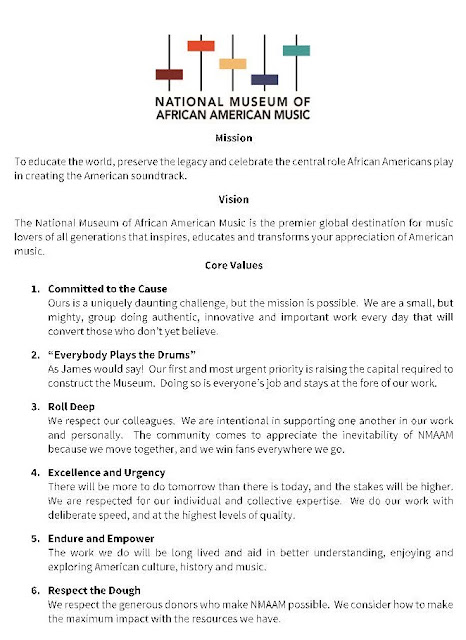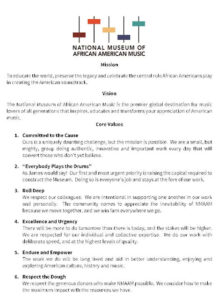Culture

Well before rediscovering Lencioni, in the latter part of 2017, it was becoming clear to me that our team’s culture had shifted, and that addressing it was important. Actually, at that time, I didn’t know to call the issue that we were facing a culture challenge. I just knew that things didn’t feel right, and I wasn’t sure why.
Fortunately, I had a restless feeling about the environment I was experiencing, and I was able to call my friend Alan Young. A seasoned, skilled and successful entrepreneur, Alan stopped what he was doing with his family on an unseasonably warm winter Saturday afternoon. For 10 minutes or so I just spilled the cloudy collection of thoughts, ideas and observations that were bouncing around in my head – in no orderly fashion. After I talked and he listened (patiently), I may have still been confused… but Alan wasn’t.
In a contrasting 30 seconds Alan shared two pieces of counsel: 1) You’ve got to set clear expectations for your people, and 2) you’ve got to take the culture back.
Just that quickly, the clouds parted, and the sun shone through. The deranged and conflicting challenges that caused me concern began to organize themselves into opportunities I could take advantage of and problems that I could solve.
Off the bat there were things that I knew to do. First, I needed to show my teammates that I cared and was paying attention to the things that were bothering them.
We needed an HR function in the company, to begin with. So I hired Laura Purswell and her company, Compass HR Partners. This way we could develop policy for vacations and holidays, and we could standardize our recruiting and hiring practices. We also created an employee handbook to provide clarity around and define protections for the people who work at NMAAM. (Each of these are the kinds of vital details that my team knows I’d rather not focus on.)
I also hired a personal trainer for the staff (That didn’t last long – like most new year’s resolutions.) and instituted a monthly “family meal” (That one stuck.) to encourage colleagues to laugh and talk with one another in a more relaxed environment. Before getting to work on Lencioni’s leadership and teamwork principals, these steps began to redefine culture and set expectations for how we work together.
There were also many steps that I didn’t know how to take. “Culture’ is a big word. How does one create it, shape it or take it back? I was, at least, certain that an employee handbook and a monthly luncheon wasn’t enough.
So, I went to Amazon and bought another book – one on culture and what it takes to become a “best place to work” as defined by any one of several business periodicals. The most impactful of these books was one entitled “Culture is Everything.” Written by Tristan White, the author is the CEO of the PhysioCo in Perth Australia which has been selected as the Best Place to Work in Australia on a few occasions.
An easy read, “Culture is Everything” tells the story of how White’s company achieved that status. In short, it comes down to creating and living out a set of core values. And that idea emerges from the remarkably simple, but often forgotten, truism that employees can’t read the CEO’s mind.
Nothing like cold water to the face to wake you up!
Now fully alert, I had to give some thought to what our core values actually are. And, importantly, I needed to get a sense from my teammates as to what they thought our core values were. The good news is that the values already existed, we just had to look and find them, and then write them down.
Core values are not rules or policies that you have to follow. Rather, they are descriptive of the culture. What is it like to work here? How do we treat one another? What is expected of a new employee as they join? Once agreed to, they become an important reminder of culture, and a screen for employee fit and preference. If you are appropriately skilled and support the core values, there is a good chance that you will fit well in our company culture.
So that’s what we did.
Over the next several weeks I met with my teammates to talk about what we think makes our place of business special. Everyone had different thoughts, and the exercise generated some interesting conversations about what culture is, causing us all to think about what it really means to be a part of this team. It was nevertheless gratifying to observe that most thoughts, though articulated differently, were similar to my own and fell into common categories. After a few rapidly turned drafts we settled on six core values that guide our culture.

Over the last year, the words that make up the core values have begun to work their way into the lexicon of language around the office. We refer to them in job interviews and performance evaluations and use them to inspire one another and to say “thank you.”
The core values are a part of our business now, but there is so much more to do.
Becoming a “best place to work” takes a lot more than core values. Tristan White talks about the importance of strategic planning, efficient meetings, employee appreciation and other elements that are also important to shaping culture. We’ve only taken baby steps in these areas and have a lot more work to do. We are a work in process.
